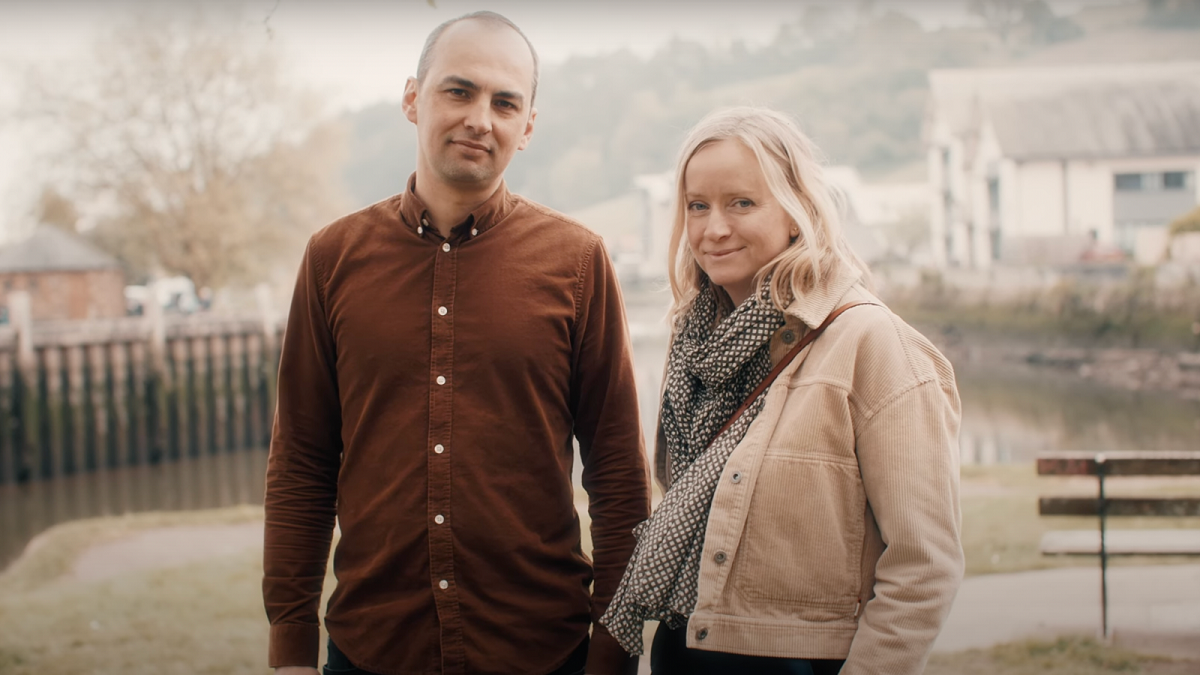Hotel Designs
In Conversation with: Jeremy Grove on sustainability beyond the buzzword
CUBE recently released its original documentary, Sustainability: A Broken Record, exploring sustainability within architecture, manufacturing and design. Following the release, we sat down with Jeremy Grove, Managing Director and Head of Design at Sibley Grove to dive deeper into this topic and learn how we can move forwards from the broken record that we’re stuck on right now…

The documentary explores how we manage the relationship between people and our planet, unearths the secrets for a more substantial impact and discovers how powerful decisions can move us forward towards a nourishing future. In his role as Head of Design at Sibley Grove, Jeremy Grove is a driving force behind the company ethos that architects and interior designers can and should be vehicles for positive change. Having articulated this position clearly through the making of the documentary, we continued the conversation.

Image credit: CUBE
Hotel Designs: Sustainability is a real buzzword across the industry and being sustainable has arguably become a ‘trend’. What are the challenges that come as a result of that?
Jeremy Grove: I’d say that sustainability has been a buzzword, and it was a trend. I feel as though it’s already moved on and become less relevant, partly because today, people associate it with greenwash and guilt.
We’ve transitioned to an environment where we’re talking about waste, carbon, circularity, and issues such as resource depletion and biodiversity.
These are far more valuable to talk about as they’re measurable and actionable, but they’re just as at danger of becoming trends and that’s definitely an issue. Trends are transient and for these situations, we need permanent solutions.
HD: In the documentary, you describe us living in a world built on consumerism and waste, without truly understanding the consequences of our actions. How do we tackle that problem and create solutions that work?
JG: The first step is acknowledging that we have a system in place which, essentially, is about generating wealth through generating waste.
A lot of designers design products today with disregard for the future. The solutions lie in circular design practices, design for disassembly and refurbishment, and taking greater responsibility for how we source our products and materials.
From a design point of view, it’s about knowing a lot about a little and becoming specialists, rather than knowing a little about a lot.

Image credit: CUBE
HD: You talk about sustainability being misleading, with products often being marketed as being sustainable, while using materials that cannot be recycled and which must then be sent to landfill. How can consumers be aware of this when making buying decisions?
JG: Often, it’s just greenwash – plain and simple. But a lot of the time, it is good intentions executed poorly, or a general lack of understanding. Until you’ve tried something, you don’t really know if it works.
Part of this is understanding more about materials. We talk about hybrid materials, which is where two materials that are of good quality and are fully recyclable are combined to form a hybrid, which is then unrecyclable. Those are the products where I understand the intention. It’s a good try, but really, we need to do better.
The good products lie in closed-loop cycles. In the documentary, we use the example of a tile which is infinitely recyclable. The factory generates zero waste and these tiles will be recycled and made back into tiles; breaking the cycle of landfill.
HD: You refer to sustainability as being ‘less bad’. What does that mean, and how can we strive to be less bad?
JG: Historically, sustainability has been about limiting impact; reducing waste, reducing carbon, buying less and driving less. The problem with that is when you have a global economy built on linear consumption, you’re dealing with a fundamentally flawed system. All you can really be in that model is ‘less bad’.
We need to be using materials appropriately, sourcing them from the right places, and not constantly digging up materials, using them and then burying them again.
Michael Braungart talks about transitioning to a way of thinking that is focused on positive impact. That means keeping valuable materials in use, creating healthy spaces, eradicating exploited labour markets, supporting forestry schemes and avoiding trends.
HD: How important is it that, as businesses, we’re taking responsibility, looking at ourselves, and allowing others to critique what we’re doing?
JG: I think it’s integral. To solve problems, we have to focus on process.
A large part of our work is shifting mentality away from solution-driven design and towards process-led design. You don’t start with a solution and tinker at the edges. You start from, ‘what am I trying to achieve?’, ‘what does that look like?’, ‘what are the appropriate materials?’.
It’s important to accept critique and act on it, but also to actively challenge things when you know they’re not right. These problems can only be solved collaboratively, and we’ve got to be aligned along the way.
HD: You talk about growing up on a farm, not having a lot of money and having to be resourceful. How has that inspired your work?
JG: As a profession, farming has to react and respond to nature. Nature dictates whether you have a good year or a bad year, but a lot of professions operate outside of that. They either fight against nature or they deny its existence.
This creates a culture of consumption with a lack of awareness of the consequences. That’s a big inspiration for how we approach design, and consider our impact on things like deforestation and climate change.
In regards to income, anyone who has experienced periods with less money, or who has felt that not everything is attainable, can use that as a positive influence and to know what their motivations are.
When we’re designing Five-star hotels, we consider how we make it accessible to everyone, and how we ensure it’s inclusive. When we’re creating spaces, everyone’s experience should be fantastic. It’s easy to lose sight of your background, but it’s very valuable to refer back to.

Image credit: CUBE
HD: How do we move forwards from the broken record that we’re stuck on right now?
JG:I think we have to release the shackles of sustainability and move on. Sustainability, as a term, has served its purpose and has got us to where we are now, but it’s a catch-all word.
We need to focus on measurable outcomes, positive impact and something which I touched on in the documentary, the idea of holistic beauty; redefining what we think of as aesthetic.
Something which is made using exploited labour isn’t beautiful, and something which damages the environment isn’t beautiful. I think the younger generations are far more mindful of that.
HD: What has the response been to the documentary?
JG: Much of the response has been around how the documentary focuses on positive messages.
I often see frustration from people who want to make an impact and want to do things better. Designers, especially, feel as though the systems and structures they work with are the opposite of where they want to be, but they have no power to influence that.
People can now see small steps that they can take to get their own house in order. They’re watching the documentary and thinking, ‘what can I do?’, but also, ‘how can I benefit from supporting and collaborating with other people?’.
The documentary is very solution-based and I think that’s so important. It’s easy to spot problems and be cynical, but it’s far harder to see solutions.
Main image credit: CUBE
In Conversation with: Jeremy Grove on sustainability beyond the buzzword
Pauline Brettell.
